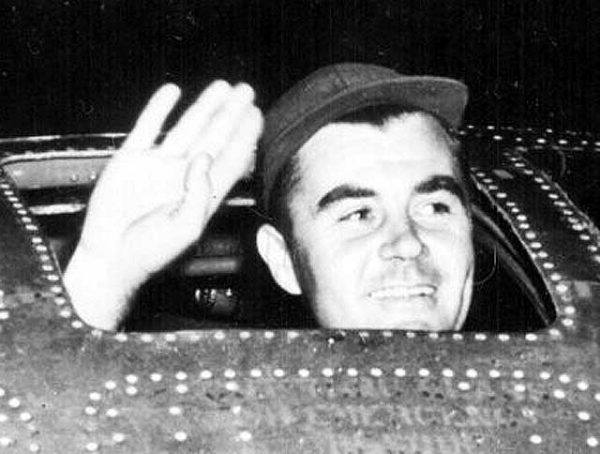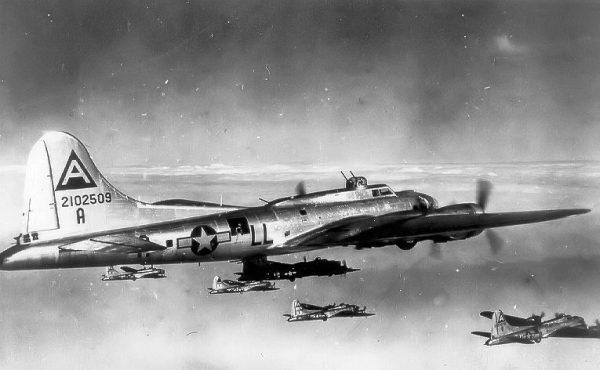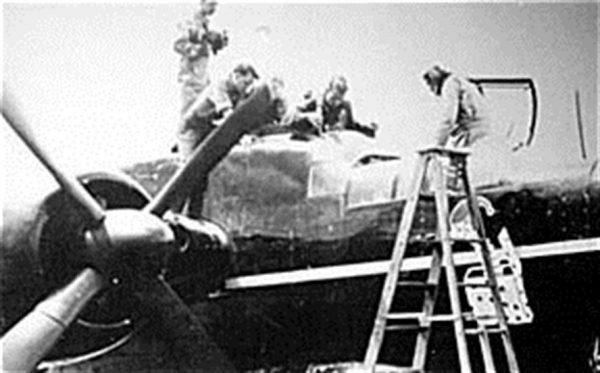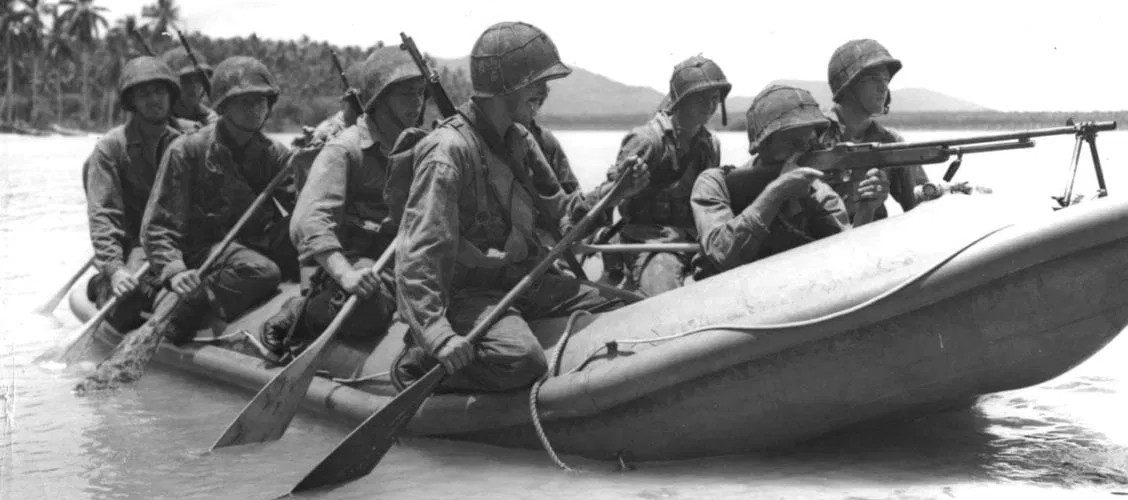1861: The U.S. Army’s Departments of Northeastern Virginia, Washington, and Shenandoah merge into one outfit: the Army of the Potomac. Maj. Gen. George B. McClellan, the only Union general with any victories under his belt so far, will be its first commander.
1942: Just off the Marshall Islands, 211 Marine Raiders climb out of submarines USS Argonaut and USS Nautilus and board rubber boats, destined for Makin Island. Lt. Col. Evan Carlson’s Raiders overcome heavy surf and engine troubles, succeeding in wiping out most of the island’s Japanese defenders, but fail to accomplish their objectives of taking prisoners and gaining intelligence. The raid on Makin Island, along with the raid on Tulagi earlier in the month, are considered the first use of special operations during World War II.
That same day, B-17 bombers target Nazi-occupied Europe for the first time, hitting a railroad marshaling yard in Rouen, France. Piloting the lead bomber is Maj. Paul W. Tibbetts Jr., who will drop the atomic bomb on Hiroshima nearly three years later.

1943: The Eighth Air Force conducts a massive raid against a Messerschmidt aircraft factory and ball bearing production facilities in Germany. Of the 376 B-17s that flew, 96 are shot down and another 95 are unable to be used again. The factory is destroyed, and ball bearing production is significantly reduced.

Meanwhile, as Axis troops evacuate the island, Lt. Gen. George Patton (featured image) and his Seventh Army enter the Sicilian capital of Messina. Field Marshal Bernard Montgomery intended to relegate Patton’s maligned force to protecting the British Eighth Army’s flank and mop-up operations, but Patton’s “Race to Messina” proved the mettle of American combat troops and restored prestige to his troops after the North African campaign.
1944: When enemy machinegun fire halts the progress of his company, Staff Sgt. Stanley Bender climbs to the top of a disabled tank to determine where the enemy positions are. For two minutes, he stands defiant while enemy bullets bounce off his makeshift observation platform. Spotting the machinegun nests on a knoll 200 yards away, he leads his squad through withering fire to an irrigation ditch. As his men provide cover fire, Bender calmly walks around to the rear of the first machinegun crew, avoiding both enemy and friendly fire, and dispatches the Germans with one burst of his weapon. He ignores incoming fire and knocks out a second position. His fellow soldiers rush the remaining enemy soldiers and capture the town of La Fonde, France. Thanks in part to Bender’s incredible bravery, 37 German soldiers lay dead, 26 are taken prisoner along with two anti-tank guns, one town, and three intact bridges across the Maravenne River.
Staff Sgt. Bender is awarded the Medal of Honor, and in his native West Virginia, a bridge is named in his honor .
1946: A 37mm bullet fires the seat carrying First Sergeant Lawrence Lambert (U.S. Army Air Forces) out of the back of a P-61 “Black Widow” night fighter, making the veteran parachutist the first person to eject from an aircraft in flight. Automatic timers separate Lambert from his seat and deploy his parachute.


















